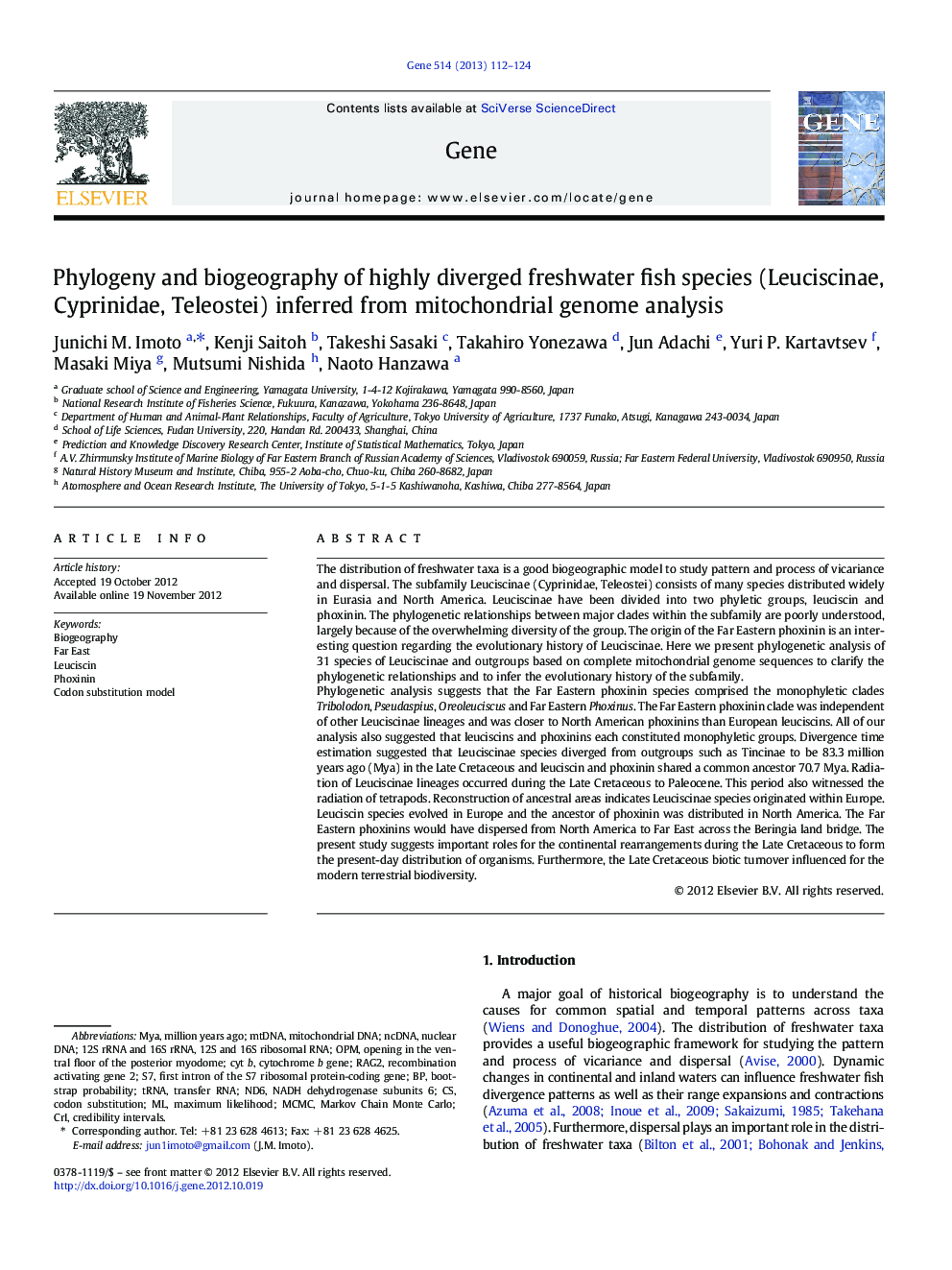| کد مقاله | کد نشریه | سال انتشار | مقاله انگلیسی | نسخه تمام متن |
|---|---|---|---|---|
| 2817531 | 1159992 | 2013 | 13 صفحه PDF | دانلود رایگان |

The distribution of freshwater taxa is a good biogeographic model to study pattern and process of vicariance and dispersal. The subfamily Leuciscinae (Cyprinidae, Teleostei) consists of many species distributed widely in Eurasia and North America. Leuciscinae have been divided into two phyletic groups, leuciscin and phoxinin. The phylogenetic relationships between major clades within the subfamily are poorly understood, largely because of the overwhelming diversity of the group. The origin of the Far Eastern phoxinin is an interesting question regarding the evolutionary history of Leuciscinae. Here we present phylogenetic analysis of 31 species of Leuciscinae and outgroups based on complete mitochondrial genome sequences to clarify the phylogenetic relationships and to infer the evolutionary history of the subfamily.Phylogenetic analysis suggests that the Far Eastern phoxinin species comprised the monophyletic clades Tribolodon, Pseudaspius, Oreoleuciscus and Far Eastern Phoxinus. The Far Eastern phoxinin clade was independent of other Leuciscinae lineages and was closer to North American phoxinins than European leuciscins. All of our analysis also suggested that leuciscins and phoxinins each constituted monophyletic groups. Divergence time estimation suggested that Leuciscinae species diverged from outgroups such as Tincinae to be 83.3 million years ago (Mya) in the Late Cretaceous and leuciscin and phoxinin shared a common ancestor 70.7 Mya. Radiation of Leuciscinae lineages occurred during the Late Cretaceous to Paleocene. This period also witnessed the radiation of tetrapods. Reconstruction of ancestral areas indicates Leuciscinae species originated within Europe. Leuciscin species evolved in Europe and the ancestor of phoxinin was distributed in North America. The Far Eastern phoxinins would have dispersed from North America to Far East across the Beringia land bridge. The present study suggests important roles for the continental rearrangements during the Late Cretaceous to form the present-day distribution of organisms. Furthermore, the Late Cretaceous biotic turnover influenced for the modern terrestrial biodiversity.
► Far Eastern phoxinins comprised the monophyletic clade.
► Leuciscinae originated in Late Cretaceous and radiation occurred after K-Pg boundary.
► An origin for the evolution of Leuciscinae within ancient Europe
► Far Eastern phoxinins migrated from North America through Beringia.
Journal: Gene - Volume 514, Issue 2, 10 February 2013, Pages 112–124